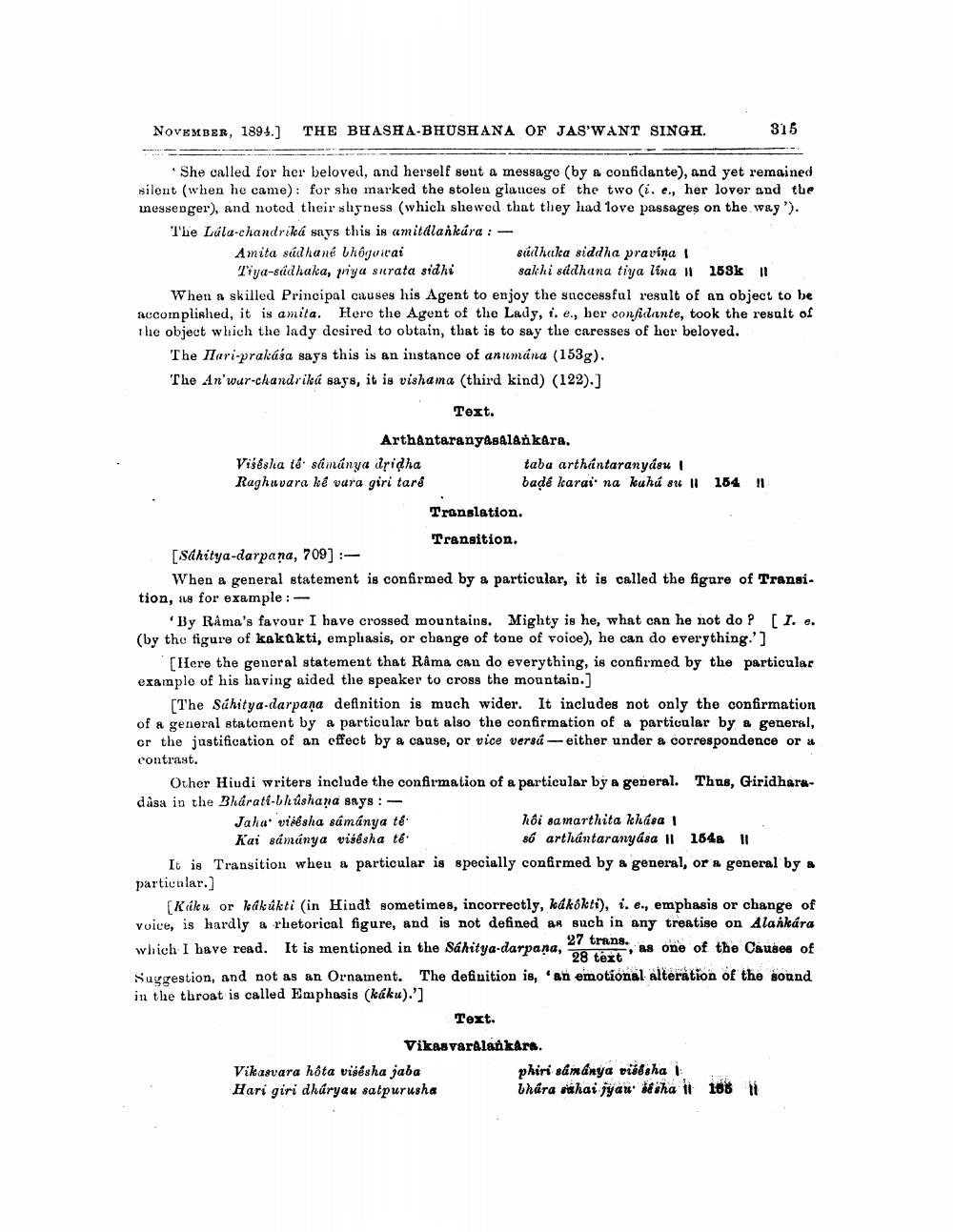________________
NOVEMBER, 1894.) THE BHASHA BHUSHANA OF JAS'WANT SINGH.
315
She called for her beloved, and herself sent a message (by & confidante), and yet remained silent (when he came): for she marked the stolen glances of the two i. e., her lover and the messenger), and noted their sligness (which she wed that they had love passages on the way'). The Lula-chandriká says this is amitdlankúra : - Amita sidhané Vhógoiai
silhotka siddha pravima ! Tiya-sadhaka, miya surata sidhi sakhi sidhana tiya lina # 153 11 When a skilled Principal causes his Agent to enjoy the successful result of an object to be accomplished, it is amita. Here the Agent of the Lady, i.e., her confidante, took the result of the object which the Indy desired to obtain, that is to say the caresses of her beloved.
The lari-prakáša says this is an instance of anumana (153g). The An'wur-chandrikú says, it is vishama (third kind) (122).]
Text.
ArthantaranyasalAnkara. Visésha té sámánya dridha
taba arthántaranyásu Raghuvara kê vara giri tara
badé karai na kahá 8u 11 184 !! Translation.
Transition. [Sdhitya-darpana, 709) :
When a general statement is confirmed by a particular, it is called the figure of Transi. tion, ils for example:
By Rama's favour I have crossed mountains. Mighty is he, what can he not do ? [ 1. e. (by the figure of kakakti, emphasis, or change of tone of voice), he can do everything.']
[Here the general statement that Râma can do everything, is confirmed by the particular example of his having aided the speaker to cross the mountain.]
The Sáhitya-darpaņa definition is much wider. It includes not only the confirmation of a general statement by a particular but also the confirmation of a particular by a general, cr the justification of an effect by a cause, or vice versí- either under a correspondence or contrast.
Other Hiudi writers include the confirmation of a particular by a general. Thus, Giridharadåsa in the Bhürati-blúshana says:Jaha višesha sámánya té.
lôi ba martlita kasa | Kai sámánya višesha te
só arthántaranyása | 1648 il It is Transition wheu a particular is specially confirmed by a general, or a general by a particular.]
Kiku or kákůkti (in Hindt sometimes, incorrectly, kdkakti), i. e., emphasis or change of voice, is hardly a rhetorical figure, and is not defined as such in any treatise on Alankára which I have read. It is mentioned in the Sahitya-darpana, trans, as one of the Causes of Suggestion, and not as an Ornament. The definition is, 'an emotional alteration of the sound in the throat is called Emphasis (káku).']
Text.
VikasvarAlankars. Vikasvara hôta visésha jaba
phiri sámánya visha Hari giri dháryak satpurusha Thára siahai jyax: šesha it 106 #




